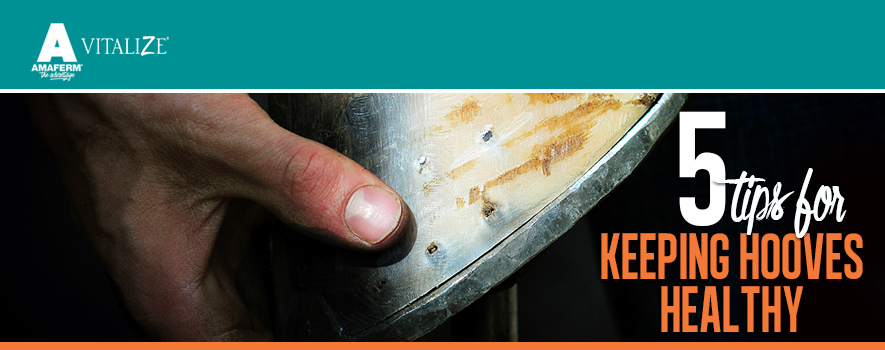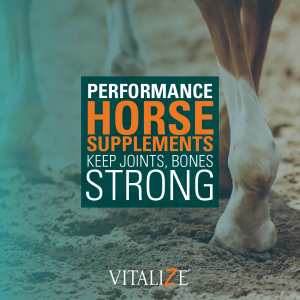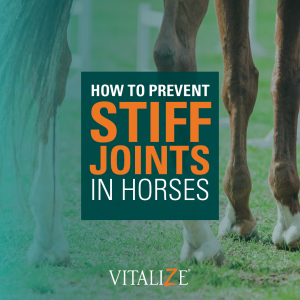 You’ve probably heard the adage, “No hoof, no horse.” Keeping your horse’s hooves healthy is something that should not be overlooked. By following these five guidelines, you can ensure your horse’s hooves stay on the right track.
You’ve probably heard the adage, “No hoof, no horse.” Keeping your horse’s hooves healthy is something that should not be overlooked. By following these five guidelines, you can ensure your horse’s hooves stay on the right track.
- Maintain hoof friendly conditions
For hooves to remain healthy it is important that the horse has a clean, dry environment. Whether it is in the pasture, a turnout or stall, the environment is a key aspect of having good, healthy feet.
- Pick feet out daily
Picking out horse’s feet on a regular basis is key to keeping horses sound. Horseshoes can trap rocks, manure, dirt and other materials. As an owner, we should clean them out daily, and ensure the horseshoes are also in good shape. This is also a great time to check for hoof problems, including:
Thrush: The first clue to this bacterial condition is a foul smell and dark ooze from the frog. Use any thrush product if this problem arises.
Punctures: If a foreign object pierces your horse’s sole and falls out, you may be unaware of the problem until an abscess emerges. Check your horse’s feet to see if these problem exist. Depending up severity, contact your vet.
Hoof Cracks: Some cracks are superficial; others can worsen to include sensitive hoof structures. If you notice a crack, describe it to your farrier so he can decide whether it needs immediate attention.
Abscesses: If your horse’s digital pulse feels stronger than usual and/or his foot is warmer than normal, he could have an abscess inside the hoof. If an abscess is present, soaking the foot in Epsom salt will help draw it out.
- Keep horses on a schedule with a farrier
In most cases, it is best to keep your horses on a 6 to 8-week schedule with the farrier. This ensures your horses are at the correct angle, have the correct amount of hoof, and don’t tear up their hooves when pulling shoes. Adequate care from the farrier is very important in keeping your horse competing at the highest level.
- Maintain hoof moisture
Your horse’s hooves can suffer when the environment fluctuates between wet and dry. Wet weather, dewy pastures and muddy paddocks can cause hooves to soften. Similarly, dry and hot weather can cause the hoof to crack, break, contract or grow brittle. Both situations leave hooves susceptible to injury and infection. Control hoof water loss and absorption by:
- Cutting back on summer turnout time
- Keep horses in pastures where there isn’t standing water
- Apply a hoof-toughening preparation before evening turnout
- Use a deep-penetrating hoof conditioner
- Avoiding unnecessary baths
- Provide optimum nutrition
For hooves to remain healthy, it is important for a horse’s diet to meet all the basic requirements. Hooves are made of a durable protein called keratin. Keratin is made by special cells in the hooves called keratinocytes, which require nutrients such as quality protein, minerals and vitamins like beta-carotene (vitamin A) and biotin (vitamin B7). These nutrients are first and foremost allocated towards the vital organs that ensure the horse’s survival, and only when enough nutrients remain after this basic maintenance is met will the hoof be supplied with what the nutrients it needs. The best way to guarantee your horse is getting the most from its diet is by unlocking the value of your feed with Amaferm®, the proprietary prebiotic found in all Vitalize® products

